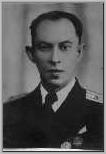
 |
Saint-Petersburg State Polytechnical University |
| STRUCTURAL MECHANICS AND THEORY OF ELASTICITY DEPARTMENT | |
| |
In 1918-1919 the institute has practically stopped working. In March 1919 prof.Belzetskiy propounded to organize a cycle of lectures on the theory of elasticity and tackled with it units of mathematics for interested audience. His proposal was supported by professors I.V.Mescherskiy (mechanics) and A.A.Adamov with I.I.Ivanov (mathematics). It was offered to publish the appropriate course of lectures, but students, who wanted to listen the course at that hungry time were not found. In all the institute at that time less than half-thousand students, mostly of the last year of education were registered.
The staff of the institute became small because of mortality from famine and typhus, emigration and lack of transport with the city centre. Only S.I.Belzetskiy, S.I.Druzhinin, I.I.Bentkovskiy and B.G.Galerkin (since January 1919 he also became the professor of structural mechanics in the the 2-nd (former Women's) Polytechnical institute) remained in the institute as structural mechanics, statics of structures and theory of elasticity teachers. After the law about urgent training of engineers in March 1920 had been published, educational process in the institute have quickened a little. About 100 senior students, who had to study according to "reduced program" were recalled from army or from a civil service.
In August 1921. S.I.Belzetskiy emigrated to Poland, where he became a professor of the Warsaw polytechnical institute and academician. The chair of structural mechanics at civil engineering faculty remained vacant not long - B.G.Galerkin, who had taken the similar chair at the mechanical faculty in March 1920, has expressed the desire to work at the civil engineering faculty. The laboratory of structural mechanics, which was organized by the professor at the mechanical faculty, also moved to civil engineering faculty. Boris Galerkin had to form the staff of the teachers of structural mechanics anew, and he decided to invite young Polytechnical institute graduates. The first structural mechanics teachers of the second generation were:
Nikolay Konstantinovich Gorchin (1889-1942), who had graduated from mechanical faculty in 1917 and was left in the institute for teaching theoretical mechanics. In 1919 he became a close friend of B.G.Galerkin and started teaching students structural mechanics in the Women's polytechnical institute. After Galerkin was elected a professor at the mechanical faculty, N.K.Gorchin returned to the institute. Besides theoretical and structural mechanics he taught hydraulics and together with I.D.Chertousov has published the book "Hydraulics in problems";
Georgiy Nikolayevich Maslov (1895-1944), who graduated from the civil engineering faculty in 1920 and stayed in the institute as a teacher of structural mechanics according to S.I.Belzetskiy's recommendation. He simultaniously read the courses of metal and reinforced concrete constructions and worked as an engineer at the construction of Volkhov Hydro Power Plant (untill 1927) and then - of Dnyepr Hydro Power Plant;
Sokrat Andreyevich Shoustikov (1890-1950), who was left in the institute for teaching structural mechanics after graduation from the civil engineering faculty in 1921. Pedagogical activity he continuously combined with projection and construction of railway bridges and since 1925 also read the course of bridges at the civil engineering faculty;
The problem with the teachers of structural mechanics of a ship was solved by the dean of the shipbuilding faculty K.P.Boklevskiy. He has invited a faculty graduate of 1911 Peter Feodorovich Papkovich (1887-1946), who has been managing with teaching of this discipline and theory of elasticity at the faculty since 1921 before the disbandment of the institute in 1930. In 1925 he became a professor, in 1933 was selected the USSR Academy of Sciences Corresponding Member. He has published a fundamental book "Structural mechanics of a ship". At the shipbuilding faculty, where there has been an airship section, in 1922 a new educational discipline - "Structural mechanics of flight vehicles " appeared. The first teacher of it was Grigoriy Grigoryevich Rostovtsev - who graduated from this faculty in 1917, and in future became professor.
In 1922-1923 prof.Galerkin selected two more graduates of the civil engineering faculty to work as the teachers of structural mechanics. They were:
Nikolay Andreyevich Kandyba (1895-1972), who had had a good practice of designing and construction of various buildings by the moment he graduated from the institute. Later he was characterized as a brilliant lecturer in structural mechanics, structural constructions and underground constructions and as an outstanding engineer;
Alexander Vasilyevich Belov (1896-1965), who worked in different companies in civil engineering beginning with student's times and long after graduation from the institute. A.V.Belov mostly taught the strength of materials (according to S.I.Druzhinin's recommendation), and since 1929 - the course of reinforced concrete constructions.
In 1924 a graduate of mechanical faculty (also B.G.Galerkin's schoolmate) Alexey Semyonovich Maliyev (1895-?) became the teacher of structural mechanics. He, as well as other his colleagues, combined pedagogical work with working in different construction organizations. Later he became a professor and a doctor of engineering sciences.
Further, untill 1930, the staff working under B.G.Galerkin's guidness, has replenished only with one civil engineering faculty graduate of 1927. It was Lazar Solomonovich Gilman (1902-?), who, not like other his collegaues, at first has become a post-graduate student. (The post-graduate course at that time wasn't finished by thesis, as scientific degrees were abolished in 1918, but the defence of the post-graduate thesis allowed to take a post of a senior lecturer). L.S.Gilman has become B.G.Galerkin's post-graduate student in 1928 and untill 1930 had small educational load in structural mechanics.
In 1929 the hydraulic engineering section of the civil engineering faculty became the water industry (later - hydraulic engineering) faculty. Before it students - future hydraulic engineers were trained in civil engineering disciplines on the same level as students - road and bridges engineers.
15 of 22 years of the civil engineering faculty existence untill 1929 it was supervised by professors of structural mechanics, statics of structures and theory of elasticity (S.I.Druzhinin - in 1907-1915, S.I.Belzetskiy - in 1918, B.G.Galerkin - in 1923-1929). Other years the deans were mathematician V.I.Stanevich, hydromechanic D.P.Ruzskiy and mechanic E.L.Nikolai.
In some months after division the diminished civil engineering faculty became a part of the Civil Engineering Institute. Its former hydraulic engineering section, which stayed on the same place and later changed names many times, was always (since 1929) supervised by the representatives of "wet" specialities. Hydraulic engineers' training in civil engineering disciplines was more and more departing to the "background" (at other faculties it disappeared in the beginning of 1920-s).
The division of the faculty (loss of road making section) could take place in 1925, but then the dean B.G.Galerkin managed to achieve cancellation of the decision, adopted secretly from him. Decreasing of the level of training not only in civil engineering disciplines, but in all other disciplines at the faculty began, generally speaking, in 1923. Then in connection with reduction of a higher school course to three years the educational time assigned to structural mechanics and a statics of structures, was reduced in 1,5 times on comparison with prerevolutionary level at once (in physics - in 2,5 times, in chemistry - in 3 times etc.). After returning to 4- and 5-year courses losses in these disciplines partially were compensated, but in a smaller measure, than in special disciplines. Hydraulic engineers training was becoming more and more narrow.
After disintegration of Polytechnical institute in June 1930 into some branches, the faculty of water industry became Hydraulic Engineering Institute. All students - hydraulic engineerings were divided into specialities, specialities - into cycles, cycles - into groups. There had been an attempt to group together teachers of related disciplines into departments. In October 1930 for the first time in the history of the whole institute prof.Galerkin was called "the head of the department" in the athorities' directive (he owed to supervise teaching of structural mechanics and strength of materials).
Structural mechanics was taught at specialities "designing and computations" (with cycles "hydraulic engineering" and "hydrotechnical constructions"), "application of water energy","water supply","industrial and engineering melioration"(cycle of irrigation). At specialities "technology of hydraulic engineering works", "hydraulic engineering researches", "engineering melioration" (cycle of drainage) structural mechanics was considered to be excessive. There engineers' training in the field of strength analisys was reduced to the level of materials' strength. The theory of elasticity was not studied at any speciality. In conditions, when higher school had to prepare narrow specialists in short time (up to three years), and school training of the majority of the students was at the level of "rabfak"(special evening schools for illiterate workers) course, studying the theory of elasticity was not realistic.
After new institutes had been formed, the staff of the teachers of structural mechanics was seriously updated. Only B.G.Galerkin and N.A.Kandyba remained from the previous staff. G.N.Maslov and S.A.Shoustikov read courses of structural constructions in Hydraulic Engineering and Civil Engineering Institutes, N.K.Gorchin - theoretical mechanics in the same institutes, A.V.Belov - strength of materials. In 1930 former civil engineering faculty, faculty of water industry detached from it in 1929, and then Civil Engineering and Hydraulic Engineering institutes formed from these faculties, have provided engineer's degrees to more than 550 graduates in general (more, than for all the previous years of the soviet power). Those graduates didn't defend degree projects or thesis. Therefore B.G.Galerkin has selected the supplement of the teachers from among those graduates during reading them the course of structural mechanics. They were:
 Sergey Sergeyevich Golushkevich (1903-1956), whose student's work about bending moment influence lines in continuous beams was published in "Leningrad Polytechnical Institute Transactions" in 1925 on B.G.Galerkin's recommendation. In 1929 senior student S.S.Golushkevich was charged to conduct exersises in structural mechanics by professor Galerkin. In 1930-1932 he was an assistant lecturer (juniour member of the teaching staff) in Leningrad Hydraulic Engineering Institute and Leningrad Civil Engineering Institute, and since 1932 - senior lecturer (assistant professor) in the Institute of Industrial Constructions Engineers - former Civil Engineering Institute;
Sergey Sergeyevich Golushkevich (1903-1956), whose student's work about bending moment influence lines in continuous beams was published in "Leningrad Polytechnical Institute Transactions" in 1925 on B.G.Galerkin's recommendation. In 1929 senior student S.S.Golushkevich was charged to conduct exersises in structural mechanics by professor Galerkin. In 1930-1932 he was an assistant lecturer (juniour member of the teaching staff) in Leningrad Hydraulic Engineering Institute and Leningrad Civil Engineering Institute, and since 1932 - senior lecturer (assistant professor) in the Institute of Industrial Constructions Engineers - former Civil Engineering Institute;
Igor Petrovich Yerokhin (1905-1969) also started carrying out exercises under B.G.Galerkin's guiding since 1929, when he was a senior student yet. He has become the assistant lecturer in Civil Engineering Institute and Hydraulic Engineering Institute;
Avraham Zinovyevich Rotshild (1900-?), who became a teacher after graduating from civil engineering faculty. In one year he was transferred to the Civil Engineering Institute. In 1933 he became a senior lecturer in the Refrigerating institute, as he had a significant experience of engineering and managment (since 1925) at the construction of the seaport refrigerators.
According to recommendations of public organizations Sergey Mikhaylovich Starostin (1902-1966) became a post-graduate student and a teacher of structural mechanics. Soon he obtained administrative posts of a speciality head deputy and in 1932 - a head of the Hydraulic Engineering Institute educational office.
In 1932 the post-graduate student L.S.Gilman defended his post-graduate thesis and became assistant professor. The new post-graduate student and Leningrad Hydraulic Engineering Institute graduate Alexander Ilyich Botkin joined to the staff. In June 1934 the institutes which were working on the territory of the former Polytechnical Institute, were joined together as faculties of the new Leningrad Industrial Institute. So, Polytechnical Institute under another name and with a lot of losses was renewed.
 |
Saint-Petersburg State Polytechnical University |
| STRUCTURAL MECHANICS AND THEORY OF ELASTICITY DEPARTMENT | |
| |